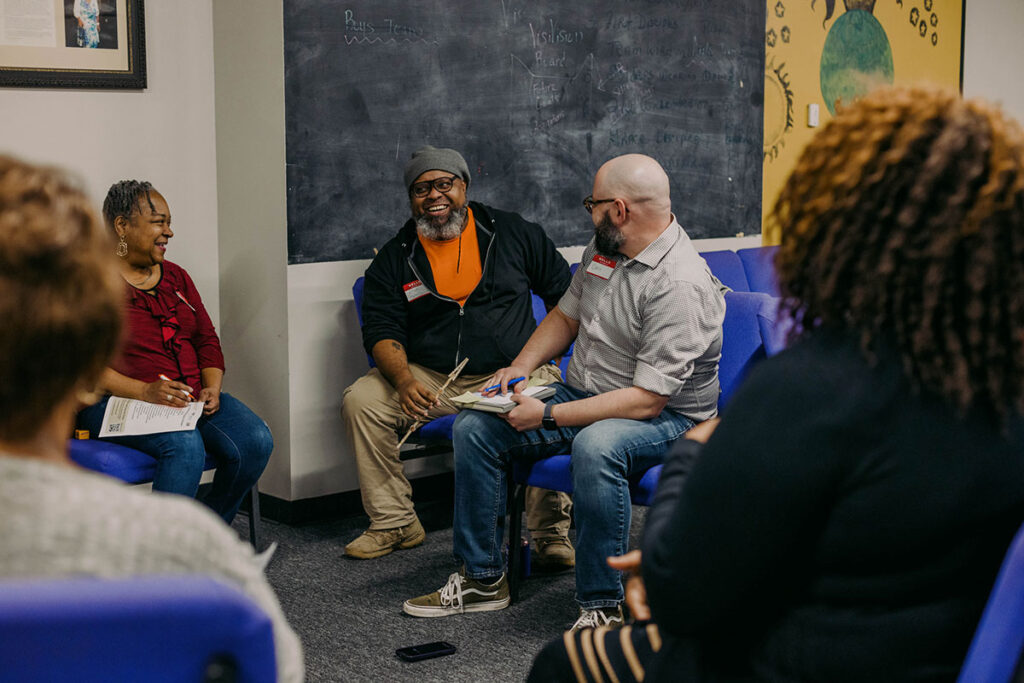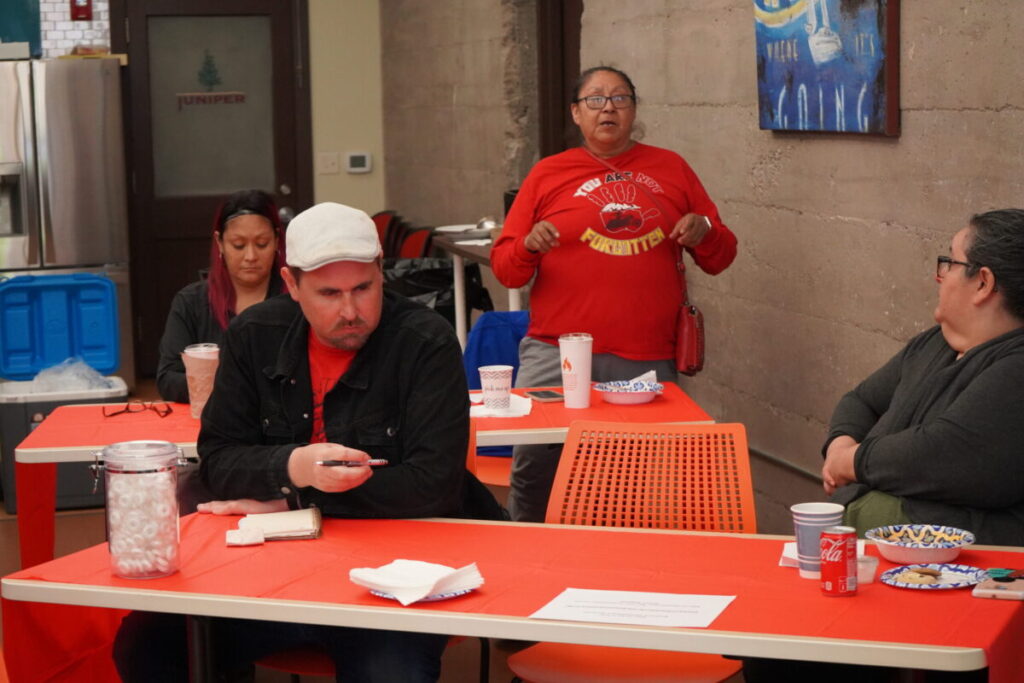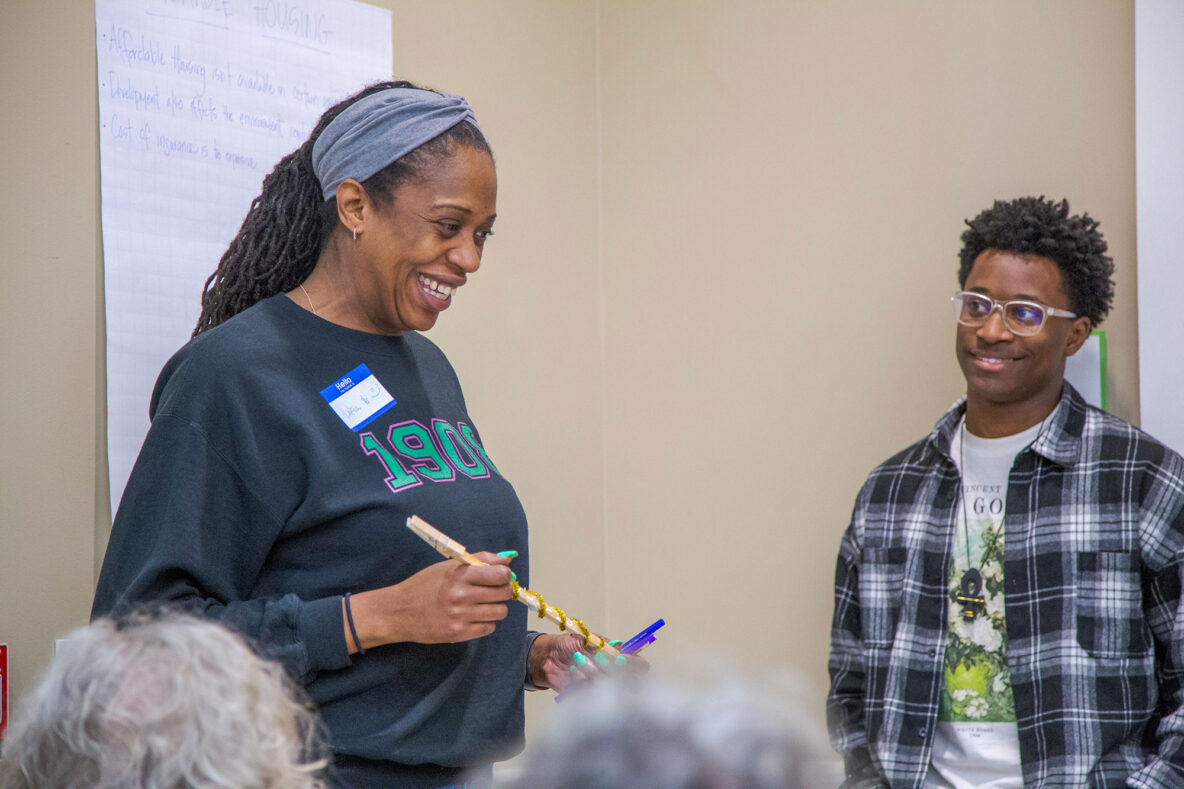100 Days in Appalachia was meant to be a pop-up publication. The newsroom planned to cover then-President Donald Trump’s first 100 days in office through a nuanced and place-based lens. But on April 29, 2017 — day 100 of Trump’s presidency — newsroom staffers reported on a resurgent white supremacist rally in Pikeville, Kentucky, and plans changed.
“That very day [we decided] that it was not going to be our last day of publishing, but that we were going to do this for the long haul through turbulent times,” said Dana Coester, founder and editor-in-chief of 100 Days in Appalachia.
Today, seven years later, the nonprofit newsroom is stronger than ever. 100 Days recently received a $1 million grant from the John. D. and Catherine T. MacArthur Foundation to support its efforts in reaching younger audiences and hiring younger editorial leaders; leading a community of practice, bringing together journalists in the region dedicated to improving their craft; and providing security, safety training and other support services for reporters covering extremism.
For Coester, the grant is “stunning, humbling, transformative — and intimidating.”
“We have been operating for several years as a ‘minimum viable product’ in order to have the staying power we needed to keep serving our region,” she explained. “This grant is a moment of validation that our years-long work through turbulent times has not been in vain.”
100 Days in Appalachia was one of several rural-focused news organizations to receive funding through Press Forward’s Aligned Grantmaking, where individual funders give directly and independently to local news initiatives in accordance with Press Forward’s funding priorities.
The MacArthur Foundation also awarded $350,000 to Mississippi Free Press for its reporting on systemic and structural challenges across the state and to Buffalo’s Fire, an indigenous-led newsroom covering the North Dakota communities of Fort Berthold and Twin Buttes — home to the Mandan, Hidatsa, and Arikara Nations. The Scripps Howard Fund awarded $3 million to The University of Southern Mississippi to train students and meet local information needs.

Solutions Circles at the Mississippi Free Press. Image by Imani Khayyam
‘That’s what deep listening is’
Kimberly Griffin, the founding publisher and chief revenue officer of Mississippi Free Press, said her newsroom fulfills its mission in part by being intentional about engaging with and listening to community members, especially those in rural areas. One way is through Solution Circles, a series of events bringing together Mississippi residents to address community challenges through sharing, listening and brainstorming solutions. Mississippi Free Press reporters attend the events, but only listen and ask for clarification, if needed. The goal is to hear what Mississippians have to say.
“When you go into the community and you ask the community to talk about the things that affect them every day, that builds trust,” Griffin said. “That’s what deep listening is.”
Griffin and Donna Ladd co-founded Mississippi Free Press in March 2020. After working together at The Jackson Free Press, they wanted to create a nonprofit statewide outlet focused on solutions rather than problems. They also wanted to create a newsroom that reflected the diversity of the state.
“I am most proud of this team that we built,” Griffin said. “This is what Mississippi looks like. This is what Mississippi does.”
The funding will help Griffin and Ladd continue to grow their team, focus on sustainability efforts and publish in-depth, public interest reporting on the causes of and solutions to the social and structural challenges facing Mississippians.

A Documenter’s training in Bismarck. Image by Jodi Rave Spotted Bear.
In North Dakota, the Buffalo’s Fire newsroom is made up of four staffers — three full-time, one part-time. Together, they produce independent journalism to inform and engage Native communities and to amplify American Indian stories in the broader culture.
Jodi Spotted Bear is the founder-director of the Indigenous Media Freedom Alliance, a nonprofit organization that publishes Buffalo’s Fire. She said her newsroom is using the funding to implement a Documenters Program, which recruits, trains and pays engaged citizens to attend and cover local government meetings.
Buffalo’s Fire is the first indigenous-led Documenters program in the U.S. as well as the first rural newsroom participating in the program. “We’re breaking new ground with them and trying out some new things with the Documenters here in North Dakota,” Spotted Bear said.
In many reservation communities, it is prohibited to record or cover tribal council meetings, Spotted Bear explained. “I think that disempowers a lot of people from being involved in the public meeting space.”
That’s why Spotted Bear is so drawn to the Documenters program. “It’s a way for us to let citizens know that this is how democracy works and that you can be a part of it,” she said. “We will do all the training that we can to make you comfortable in those spaces.”
The Buffalo’s Fire staff held their first Documenters training in Bismarck, North Dakota, on May 15. Spotted Bear was pleased how many people showed up, especially those who made the two-hour trek from the Standing Rock Reservation. Spotted Bear’s goal is to expand the Documenter’s program to also cover tribal meetings. Her newsroom is currently working with the Teton Times, which serves the Standing Rock Sioux Nation, to make that happen.
A small school with big ambitions
The Scripps Howard Fund awarded a three-year grant of $3 million to The University of Southern Mississippi to create and operate the Roy Howard Community Journalism Center. The center, which will open by the end of 2024, is designed to train student journalists on how to cover under-reported communities, identify and combat misinformation, and collaborate with local newsrooms.
With 21 faculty members and roughly 380 students, USM’s media and communication school may be small, but its plans for the Roy Howard Community Journalism Center are big.
Each year, a group of 16, paid student journalists will produce local stories for news outlets across the state, with a focus on covering beats in Mississippi’s news deserts — areas with limited access to credible and comprehensive news and information. The student journalists will work directly with those outlets, explained Edgar Simpson, the director of USM’s School of Media and Communication. The goal is to help fill in coverage gaps due to a lack of staffing or resources.
The center will also operate a “What is True” hotline, podcast and website, designed to help Mississippians separate facts from hearsay. Residents will have the opportunity to call in with questions about a claim they’ve seen, and students will fact-check that information. Simpson said he’s especially excited that students will gain “a deep understanding in media literacy” as part of this work.
“I’m not sure anybody’s attempted this on a regional and local level,” Simpson said. “We’re going to give this a shot and see what happens.”
Simpson hopes that, by the end of the three-year grant, that most of the journalism that students produce out of the center is used by local outlets. He hopes to see graduates get recruited and receive multiple offers from professional news organizations.
An investment in Appalachia
At 100 Days in Appalachia, Coester is turning her attention to the outlet’s fastest-growing audience — young people — and earning their respect and trust. Her team is launching two new verticals, Generation Zeitgeist and The Dystopia Beat, which will feature “young media makers from the region and focus on content that speaks to the cultural, technological, political and other realities of diverse Appalachians ages 16-30.” The 100 Days team is also working with young artists and designers in the region to develop merchandise in the coming months.
100 Days also plans to use the MacArthur funding to provide training and peer support that acknowledges the risks and realities of local reporting. “It’s not just reporting on domestic extremism,” Coester explained. “Local journalists and local press freedoms are under attack in the course of everything from covering elections to school board meetings, and the increasing manipulation that leads to unrest and political violence.”
Finally, Coester plans to grow 100 Days’ collaborative work with other local and rural newsrooms. “We are carefully working on capacity building and sustainability for what comes next,” she said. “Not just for our newsroom, but for what comes next in our region and in our democracy.”
“Any investment in 100 Days is an investment in our region and in the voices and young people of this place,” Coester added. “Young journalists, editors, documentarians, artists and other media makers become part of a powerful narrative and economic engine — and they don’t have to leave this place to do this work or to feel pride in who they are and where they come from.”

